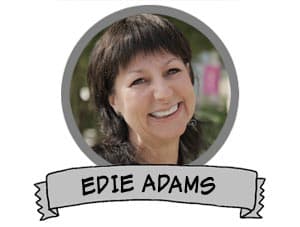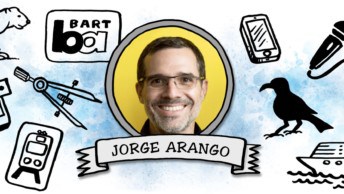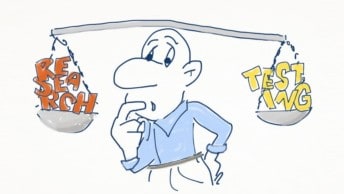Last week we were fortunate enough to host Edie Adams (Principle Ergonomist at Microsoft) in our Ask the UXperts chatroom to talk about designing for emotion.
Learning to harness the emotional connections that people make with products can be a powerful tool when designing. Understanding emotional engagement can help to inform design decisions and differentiate our work from that of others.
Edie took us through some of the basics of designing for emotion and it was a very interesting hour.
If you didn’t make the session because you didn’t know about it, make sure you join our community to get updates of upcoming sessions. If you’re interested in seeing what we discussed, or you want to revisit your own questions, here is a full transcript of the chat.
Transcript:
| HAWK | I’m super excited to have Edie in the chatroom today for the first ATU session for the year. Thanks Edie for your time today, and to the rest of you for joining us. |
So for the formal intro: Edie currently holds the position of Principal Ergonomist in the Devices Design Team at Microsoft. She first joined Microsoft in 1994, and has held numerous ergonomics, user research and Design/UX Manager roles. Her innovations have been recognized with over 80 US and international patents. | |
Her design work is included in the permanent collection of the Museum of Modern Art in New York and The Chicago Antheneum and has been recognized by IDEA and Red Dot awards. She is the co-author of a book targeted to design practitioners, Design for Emotion, published July, 2012, by Morgan Kaufman. A Chinese language edition was published in 2014 | |
Edie literally wrote the book on designing for emotion. Design for Emotion (co-written with Trevor van Gorp) is a guide to understanding and applying emotion and personality to create products, applications and websites that are more desirable, usable and useful. | |
And that’s what we’re talking about today – how we can harness the emotional connections that people make with products. Understanding emotional engagement can help to inform design decisions and differentiate our work from that of others. | |
| edie a. | Hi Everyone. Thanks for joining the chat |
| HAWK | So with that, I’ll hand over to Edie to introduce the topic and give us some background. :) |
And following that, we’ll open the floor for questions. | |
| edie a. | Designing for emotion is a way of ensuring that the products or UI or services you design meet, or even better exceed the expectations of your users. When we think about meeting user needs, we usually think of cognitive needs, or physical needs, but I would say that emotional needs matter too |
We have all kinds of resources, tool kits and guidelines for making sure that the physical and cognitive needs of our users are met, but when it comes to emotional engagement, designers are often left to sort it out on their own. I would suggest that there are tools for designing emotional engagement, too. | |
| robin | As you know, internal facing products don’t get much love. What would be some quick easy wins that might be able to be snuck in under the radar? |
| edie a. | One of the things that might be helpful in figuring out how to design to foster a positive emotional engagement with your product users is to think about the users relationship with the product much like a relationship with another person. You have to be attracted to person, then you engage with the person, and if the promises are kept, you extend that relationship into new territories. It is kinda the same progression with a product. |
| HAWK | It might be helpful to start from the beginning. What does designing for emotion actually look like? |
| edie a. | internal facing products don’t get much love, I think, because they often have to be used. There is no choice about it. So, you can think that the product circumvents the stage of attraction and gets right on to engaging the user. So , the more the product can deliver on it s promises the better it is for the user. Just get the job done moght be the attitude of a good, internal facing product. |
Deigning for emotion means that the product isn’t just usable but that it satisfies more deeply. It means that the user is truly happy in their interaction. Designing for emotion means that the product ends up being a positive addition to your life. It transcends being a vehicle of utility. | |
| Daniel C. | Do you have a process for Emotional Design? What is it? |
| Khalil R. | What do you suggest to use for measuring emotions? SAM rating scale, biosensors, EEG brainwaves? |
| Lisa | Could provide an product example and designing for emotion that went into it? |
| Samira B. | can you give us an example of a popular product/site that in your opinion fits the bill of an emotionally satisfying user experience |
| edie a. | Designing for emotion looks like a good match between the user and the product. The user finds the product attractive, the product delivers on it expected functionality with no undue hurdles. It is worthy of trust from the user. And then, the user extends his or her relationship with the product, perhaps by having it do more or mean more. |
| Lily Z. | How much of designing the emotional experience has to do with graphics and usability? I would assume that the wording used throughout is also important to the emotional response. Is there any other element that also affects the emotional experience? |
| Ricardo L. | Thanks for the intro Edie. I work with an analytics product that’s supposed to deliver key insights about the user’s data. It’s designed like a dashboard and I was wondering if you have done an emotional approach for something like this. Thanks! |
| edie a. | One process of designing for emotions that I have found to be useful is to think of the relationship between a person and a product like the relationship between two people. I think of it as a relationship in three time-based sequences: attract engage extend. You can make design choices that optimize any of these three phases, and all the phases play out over the time the product is in use. Designing for emotion can be be one more priority for the designer. Just like you make decisions to make the product quickly, or at low cost of manufacture, or to be beautiful, you can make emotional engagement a priority. |
| TJNZ | What are some examples of Microsoft products where you feel that designing for emotion has been successful for the target user group? |
| E.A. G. | Excited to be here. Recently got a certificate in UX/UI. Attempting to learn Python, Ruby. Helping my current employer build a consumer facing app that caters to airport travelers. Edie, can you expand on the three phases when you get a chance? Attract, Engage, and Extend? |
| Allison C. | Is emotional engagement is more about a flawless and dependable user experience, than it is about cute/quirky/unique personality of the product? |
| edie a. | I will try to answer a question posed by Lily.Graphics and usability are for sure part of the tools you have to deliver emotional engagement. But the relationship starts from the first time the users sees or hears about the product. From that early time, the users is already forming impressions of the product that will be the basis for expectation once they use the product. So ait is important for the experience to be consistent, from that first point of contact. |
| Kat L. | UXers often talk about joy and delight, I’m curious what other emotions you find valuable for creating meaningful products. |
| Lily Z. | Thank you Edie for your answer. I had not considered that as the starting point of the relationship. |
| edie a. | good question, Allison. Dependable vs, cute are both valid expressions of personality. But, it kinda depends on what you as a user want from a product which is going to be more rewarding. For example, I really do not need my insurance company account page to come across as cute or quirky. |
| Jenny A. | I feel that designing for emotions increases the likelihood of your product being shared, as people promote the positive experience they’ve had using it. That certainly would make it worth doing. |
| edie a. | Joy and delight to me bring up an important distinction in how we understand emotions. Emotions can be thought of as having a magnitude ( how deeply you feel something) and well as a meaning(fear, happy, anger, etc). It seems more likely that a product or UI will be more satisfying if it matches the need of the user. Sometimes fear, or the adrenaline that comes from handling the fear, is exactly what a product needs to deliver. Halo, for example… |
| Allison C. | Or a product page could inspire FOMO (fear of missing out) by making the product seem scarce, like flash sale sites. |
| Kat L. | Great point! I love the idea of considering magnitude of emotion – playing Halo certainly is a different level of anxiety and should be dealt with differently than say, an error message. |
| edie a. | Jenny-designing for emotions can for sure lead to sharing the experiences of the product. People are likely to share what moves them. So, in the interests of expanding the community of users, that experience might best be positive. |
| Kat L. | MailChimp is full of great examples of a singluar voice with varying tone that conveys the appropriate emotion to users depending on context. They’re really well known for their style guide for these reasons. Are there other tools you use to ensure appropriate and consistent emotional tone other than a style guide? |
| edie a. | tools to use to establish tone are varied. So much of designing for emotion comes from consistency and clarity. It is confusing and bewildering when the product changes its tone more of the same. You can just hear someone say” why did you do that? |
| HAWK | edie adams: Can we jump back a bit and revisit Khalil’s question: What do you suggest to use for measuring emotions? SAM rating scale, biosensors, EEG brainwaves? |
| Jenny A. | What is the SAM rating scale? |
| HAWK | (I have no idea!) |
| edie a. | Scaricity and FOMO are a great example of deliberately impacting the relationship between the user and the product, separate from the product design itself. At a basic level, you as the user want to show your mastery of the situation, making you look good, because you were able to get the scarce good. It ratchets up the intensity of the attraction and engagement with the product. |
yes, we can talk about measuring emotions. In my work, it is often necessary to first establish what you want to do with the information once you have the emotion measured. Do you need to know what the emotion is ( defining it) or how much of it there is, or how it has changed over time, for example. Sometime subjective measures are needed, sometime, objectives are needed. You need to match the means of measurement with the need for the info. | |
I would like to hear what comes to mind for you all when I ask you to think of a product in your own life that you love having around you. It is likely a product that uses a deep emotional connection to differentiate itself from the competition.. What do you think of? | |
| Lukcha | It’s often a mix of sentiment (who gave it to me and why) as well as usefulness. |
| Chris r. | A guitar. Does that count? |
| Lukcha | I reckon! |
| edie a. | When a product category is crowded, the emotional connection can make or break the success. If there is only one product or service that does what you need it to, you can put up with a weak emotional engagement. But if you have choices, and the engagement matters to you, you will pick a product that is emotionally satisfying. |
| Lynne | My water bottle. Sounds silly perhaps, but no other water bottle is the same! |
| Brian S. | I’d agree on the usefulness 100%, I check Google Now every morning and on my commute for stories it has my interest in and things like weather. |
| Antonija B. | A dishwasher. When it breaks, I realize how much I love it :) |
| Ricardo L. | Probably my travel bag |
| Teena L. | So it is best to find out your target market then research the emotional attachment necessary for the product before entering the marketing design phase? |
| Lily Z. | A guitar has a lot of history working for it as well. There are a lot of associations going with that as well as your own personal history with guitars, music, or the process of acquiring it. |
| edie a. | A guitar and a water bottle have some interesting similarities from an emotional perspective. Both used in close proximity to the body. Touch deepens the extent to which emotions are felt. |
| Jenny A. | My rainbow water glass. |
| Micha | Physical product have the element of time which adds to emotion whereas software doesn’t have that same connection. hence why people jump ship often when it comes to apps and sofware |
| edie a. | Associations with the product are kinda like when you get anew friend with whom you have lots of friends in common. There is a pretty good chance that you wil get along… |
| Brian S. | That’s a great point Micha. |
| edie a. | The change in emotional engagement with a product over time is super- interesting to me. As a designer, know which phase of usage you want to optimize is critical to designing for the emotional engagement. |
| Jenny A. | I’ll be looking around at what I’m using today , online and off, to see what is doing for me emotionally. Should be interesting :) |
| edie a. | Have fun with seeing your emotional connections to products in your life with new eyes! |
Attract engage extend refer to three phases of emotional engagement that occur sequentially. In the phase of attract, the user becomes aware of the product and has some bit of curiosity about it. THe product at this stage succeeds if the user is rewarded sufficiently that they begin usage. THe engage stage is all about establishing trust. Does the product do what the user thinks it should? if so, the the phase of extend can happen and the emotional engagement grows and deepens. | |
| HAWK | Thanks so much for your time today Edie – we really appreciate it. It’s been a pleasure learning from you. :) |
| Lukcha | It really has. Thanks so much. =) |
| HAWK | Thanks also to everyone that joined in. Keep your eyes out for the transcript early next week. |
| edie a. | happy to talk about design for emotion. |
| Lukcha | Thanks everyone! If you still have questions or want to continue the discussion, head over to the forum thread:http://community.uxmastery.com/forum/news/7698-… |





